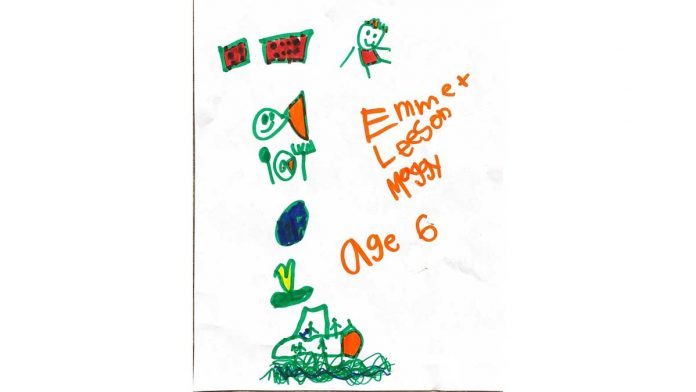M’CHIGEENG – Gimaa Radio station manager and founder Anong Beam has travelled a long and winding road to bring her father (renown Anishinaabe artist) Carl Beam’s dream of creating an Anishinaabemowin radio station into fruition. Gimaa Radio is based in M’Chigeeng and broadcasts “stories and conversations for learners and speakers to celebrate and laugh together in Ojibwe.”
A few weeks ago, Ms. Beam approached The Expositor with an innovative idea on how this paper could assist in the Gimaa Radio goal.
“For a long time I wanted to have some kind of relationship with different news media outlets,” she said. “I had approached the CBC before, but that never panned out. We are really too small an audience for that to really work.”
She came to realize that the news of greatest interest to her audience was hyper-local. “I thought that The Expositor would be a good fit,” said Ms. Beam. “The Expositor is so local and local news with the community is what we really want.” So she reached out to staff writer Michael Erskine with the concept.
“I thought it was a great idea,” said Mr. Erskine, who has taken several Ojibwe language courses over the past three decades, albeit with what he admits has been very limited success. “I have always been a strong supporter of maintaining Indigenous languages,” he said, “so I jumped at the opportunity. I thought that not only would I be doing my small part to strengthen Anishinaabemowin here on Manitoulin, but I might improve my own grasp of the language at the same time.”
Mr. Erskine brought the plan to his editor and Manitoulin Publishing owner Alicia McCutcheon, whom he knew as also being a strong supporter of strengthening Anishinaabemowin and who has encouraged the use of Indigenous words in local news stories and articles as did her father before her.
“I thought it was a great idea,” she said. “We have often wondered how we could do more to assist in strengthening Anishinaabemowin and with Michael willing to take on the project it seemed like a good step in the right direction.”
On Tuesday, the day following the production of The Expositor, Mr. Erskine takes the news stories from the front and third pages of the newspaper, those with the lead stories, and writes a short synopsis of the story which he then sends to the radio station.
The following day, Wednesday, when the paper hits the newsstands, Mr. Erskine and radio host Eric Hare and technician Erica Hare connect by telephone. Mr. Erskine reads the English version of the news item, followed immediately by Mr. Hare speaking in Anishinaabemowin. When Mr. Hare says “nahow (okay)” that signals Mr. Erskine to continue reading the news items.
“It seems to be working pretty slick so far,” said Ms. Beam.
Ms. Beam notes that the newscast helps move in the direction of the UN Declaration on the Rights of Indigenous Peoples. “Indigenous people have and need the right to be in control of their own media,” she said.
The challenge for many Indigenous communities is their relatively small populations and the vast number of individual dialects involved.
“Even here on Manitoulin Island and along the North Shore there are different ways of speaking,” said Ms. Beam. “Wiikwemkoong has their own dialect, which is different than Sagamok or M’Chigeeng. There are a lot of variances.” So Gimaa Radio’s reach, even though they are online, tends to be very localized and involve small audiences.
By having the news, local news, broadcast in Anishinaabemowin Ms. Beam said she hoped to encourage more use of the language in everyday interactions and conversations. “We are hoping to bring the language into the community in a very relevant way,” she said. “We are not seeing language acquisition taking place in the community, even though we have children in language emersion, it seems to be more linked to ceremony and culture.”
Like Latin became?
“Yes, exactly,” she said. “We need to build active speaking. We can’t just leave it on the shelf.”
Despite being extremely widespread for literally thousands of years, Latin became an esoteric and specialized language used primarily for ceremony and, to some extent, scientific discourse—soon to be supplanted by the more common tongues in use. A case of use it or lose it.
“We can’t allow ourselves to put it (Anishinaabemowin) on the shelf and just take it down to dust it off for ceremonies and special occasions,” she said. “It has to be a living and breathing thing.”
Part of that endeavor is to harness technology and incorporate it into the process.
Gimaa Radio can be found online at GimaaRadio.com.




